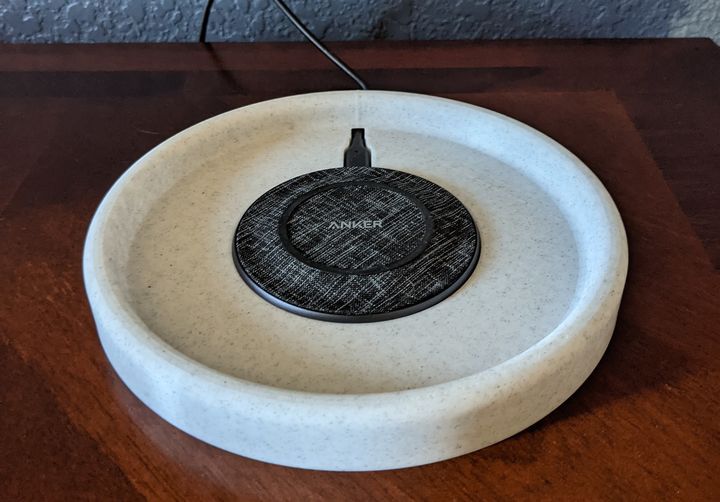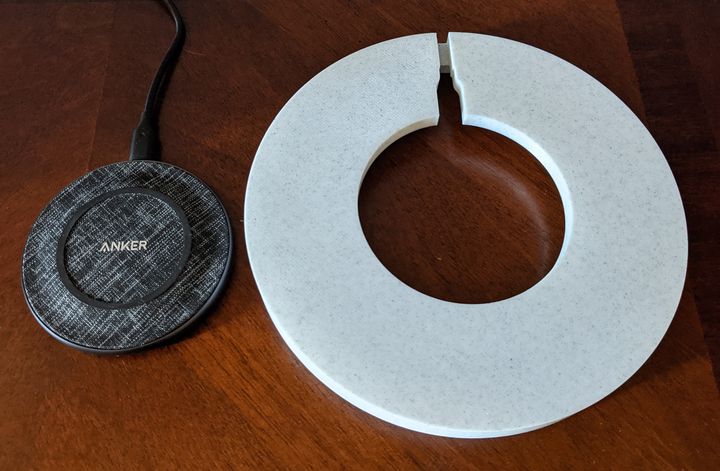
This week’s selection is the “Perfect Wireless Charger Cradle” by Trevor Holmes.
Holmes devised this devilishly simple 3D printed cradle to hold both a smartphone and a wireless charger, and line them up perfectly each time without possibility of error.
The problem here is one which many of us have faced: grabbing the phone in the morning, only to find it wasn’t aligned on the wireless charger and hasn’t charged all night. Usually this happens on an important day when you don’t have easy access to charge power.
Apple attempted to solve this problem with their latest iPhone 12 series with something called “MagSafe”. It’s a protocol involving strong magnets that automatically align the phones on MagSafe chargers so that the problem doesn’t happen.

However, there’s a couple of issues with the MagSafe approach: it isn’t a protocol used by many other providers; it’s expensive; and it doesn’t work if you don’t have an iPhone 12.
Holmes’ solution is vastly simpler: it’s a low bowl that automatically centers the smartphone when dropped inside, and the wireless charger is of course in the center. Works every time. Holmes explains:
“Shaping the cradle to be ‘phone-shaped’ was my first inclination but then I thought about the dish and how that would be phone-orientation-agnostic and might be easier to use from bed.”
Yet Holmes’ solution does have an issue: does your smartphone fit in the cradle? What about the wireless charger? What it is a different size or shape? The default solution from Holmes is designed for an Anker Powerwave wireless charger in the center. The bowl is slightly curved so it should handle a variety of devices.
Brilliantly, Holmes has provided the 3D model in OpenSCAD form: this is a programmatic language where you can numerically specify dimensions. This allows you to easily adapt the design to fit many different wireless charger systems.
Holmes has devised the OpenSCAD code to permit circular wireless charger openings, but also can handle other shapes by uploading an SVG file and adjusting its size.
This is a perfect example of how to create a highly functional object with 3D printing that has an incredibly simple geometry. There are no moving parts, yet it still does work for you.
Via Google Docs and Reddit
